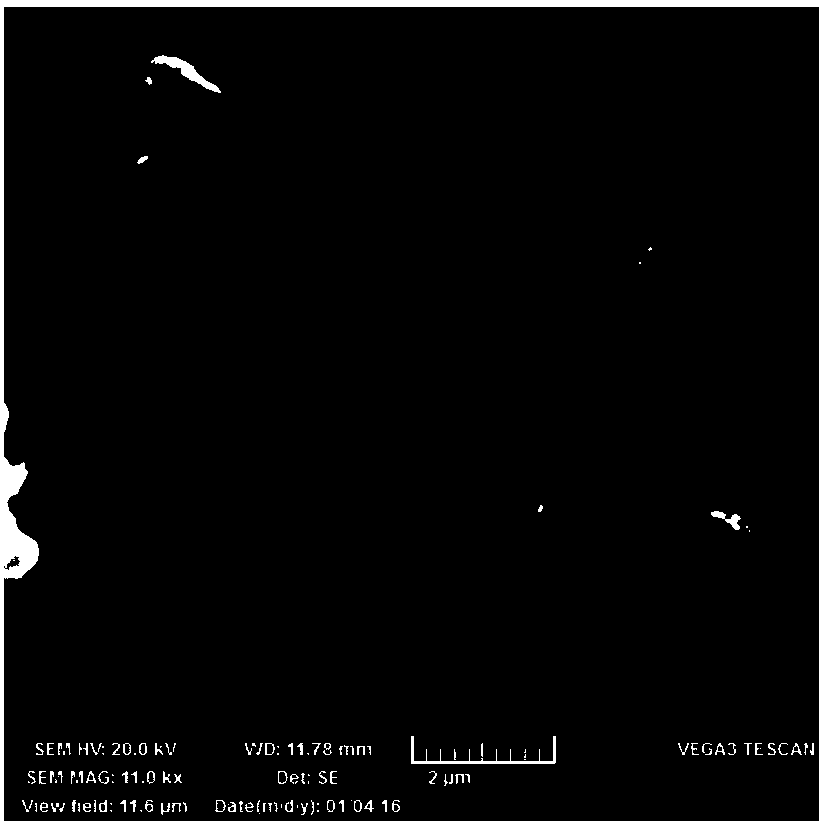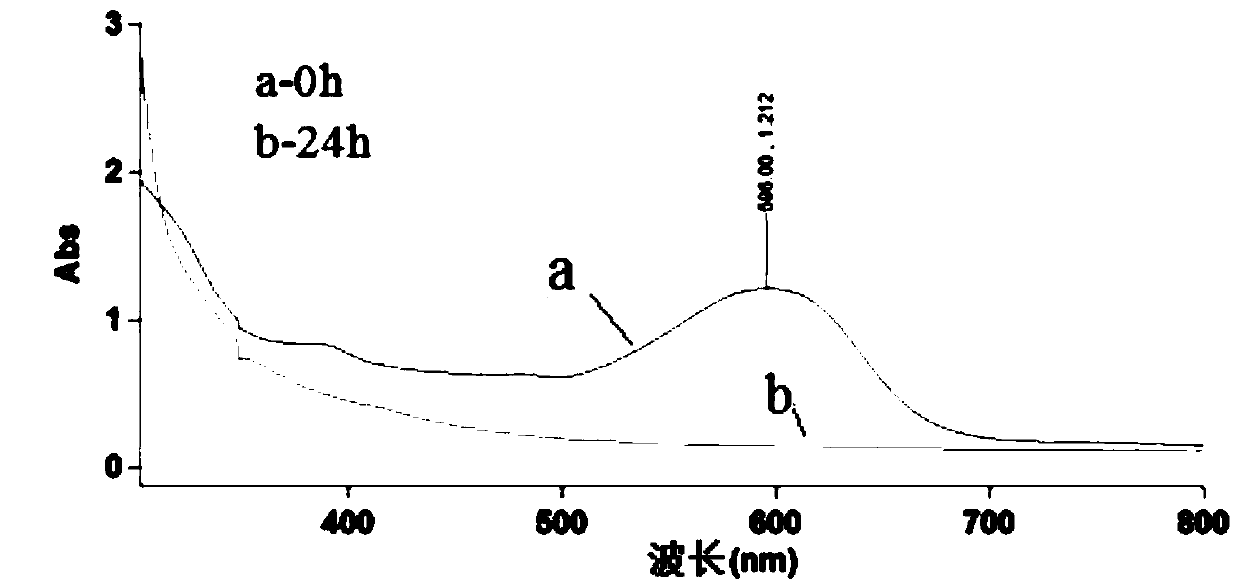Bacterial strain of Bacillus spp. for high-efficient wide-spectrum decolorization and degradation of reactive dyes and application thereof
A reactive dye, high-efficiency and broad-spectrum technology, applied in the field of microorganisms and wastewater treatment, can solve the problems of single function of degrading strains, incomplete degradation, complex components, etc., and achieve the effect of good theoretical research value and production and application prospects.
- Summary
- Abstract
- Description
- Claims
- Application Information
AI Technical Summary
Problems solved by technology
Method used
Image
Examples
Embodiment 1
[0020] Isolation, screening and identification of embodiment 1HM01 bacterial strain
[0021] (1) Preparation of culture medium
[0022] Inorganic salt medium: KH 2 PO 4 0.5g / L, K 2 HPO 4 1.5g / L, NaCl 0.5g / L, MgSO 4 ·7H 2 O 0.5g / L, 1.5mL of trace element solution was added to 1L medium (Zheng Yongliang, Zhong Yulin, Xu Hong, et al. Screening and characteristics of dye decolorization strains[J]. Journal of Huazhong Normal University: Natural Science Edition, 2008 , 03(3):444-447). Among them, the composition of the trace element solution is: CuSO 4 ·5H 2 O 4.0g / L, FeSO 4 ·7H 2 O 0.7g / L, FeCl 3 ·6H 2 O 7.0g / L, CoCl 3 ·6H 2 O 0.2g / L, NaMO 4 2H 2 O 3.4g / L, CaCl 2 2H 2 O 2.0g / L.
[0023] LB medium: yeast extract 5g / L, peptone 10g / L, sodium chloride 5g / L.
[0024] Synthetic medium: add 50g / L glucose as carbon source to inorganic salt medium, and use different concentrations of dyes as nitrogen source.
[0025] Adjust the pH value of the medium to about 7.0; add...
Embodiment 2
[0034] The research of embodiment 2 HM01 bacterial strain decolorization, denitrification
[0035] (1) Decolorization and Denitrification Ability Determination
[0036] Inoculate the HM01 strain in LB medium for overnight culture at 30°C and 150rpm in a bed, centrifuge at 4000rpm, remove the supernatant, and resuspend with an equal volume of phosphate buffered saline (PBS) to obtain a seed solution, with a 10% inoculum size Inoculate it in a synthetic medium containing 20 mg / L reactive navy blue dye, culture it statically at 35°C, and take samples at regular intervals and store it at 4°C for testing.
[0037]1) Take 10mL of the sample to be tested in a centrifuge tube, centrifuge at 4000rpm for 10min and collect the supernatant liquid, resuspend the bacteria in the centrifuge tube with an equal volume of sterile water, and calculate the growth of the bacteria based on the light absorption value at 600nm. Ultraviolet-visible spectrophotometry (UV-Vis) was used to conduct full-...
Embodiment 3
[0044] The research of embodiment 3 HM01 bacterial strain decolorization optimal condition
[0045] (1) Effect of temperature on decolorization and degradation of HM01 strain
[0046] Under the condition that other reaction conditions are fixed, temperature is taken as the single factor variable, and the temperature conditions are respectively set as 25, 30, 35, 40, 45 and 50°C.
[0047] Strain HM01 was inoculated in LB culture medium at 30°C and 150rpm for overnight culture, centrifuged at 4000rpm, the supernatant was taken, and resuspended with an equal volume of phosphate buffered saline (PBS) to obtain a seed solution, which was inoculated at 10% inoculation volume In the synthetic medium containing 60mg / L reactive navy blue dye, it was cultured statically at different temperatures for 24 hours, and the decolorization and degradation of the dye by the HM01 strain were determined. see results Figure 5 , the optimum temperature for HM01 strain to degrade the dye is 35-40°...
PUM
| Property | Measurement | Unit |
|---|---|---|
| decolorization rate | aaaaa | aaaaa |
Abstract
Description
Claims
Application Information
 Login to View More
Login to View More - R&D
- Intellectual Property
- Life Sciences
- Materials
- Tech Scout
- Unparalleled Data Quality
- Higher Quality Content
- 60% Fewer Hallucinations
Browse by: Latest US Patents, China's latest patents, Technical Efficacy Thesaurus, Application Domain, Technology Topic, Popular Technical Reports.
© 2025 PatSnap. All rights reserved.Legal|Privacy policy|Modern Slavery Act Transparency Statement|Sitemap|About US| Contact US: help@patsnap.com



